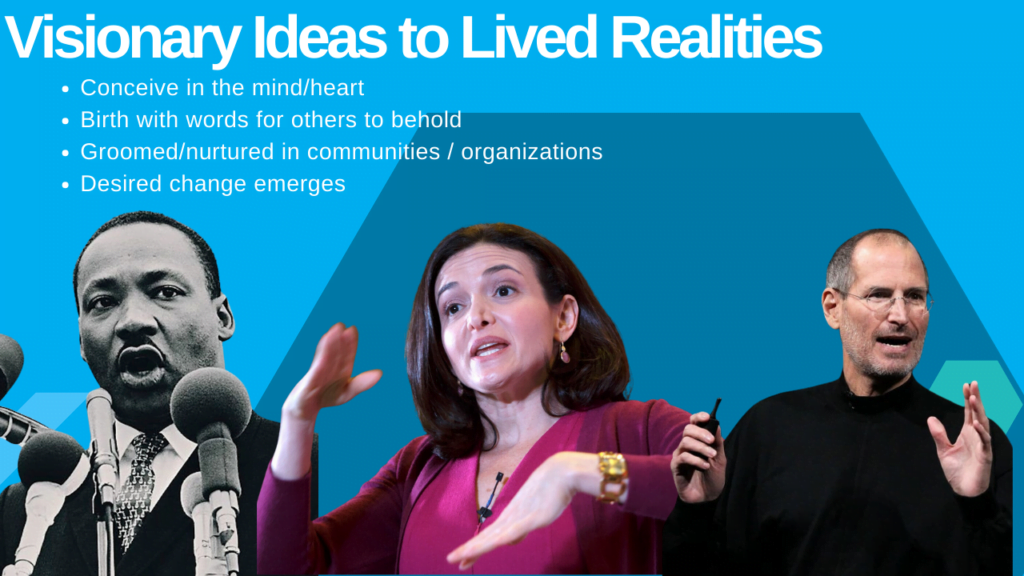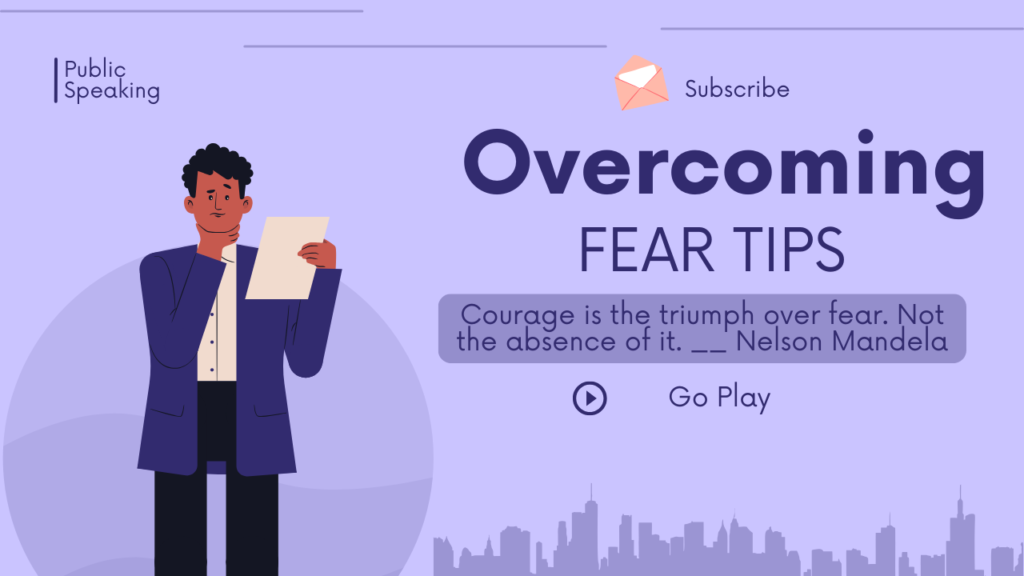Harness the power of your voice

Public speaking is a critical skill for leaders and professionals who want faster upward mobility in their careers and those who intend to become industry top voices. It enables leaders to convey ideas effectively, inspire action, and drive change. Yet, for many, the thought of speaking in front of an audience can be daunting.
Mastering the art of public speaking not only enhances your ability to communicate but also significantly impacts your career growth and leadership effectiveness.
In this blog post, we delve into essential tips and strategies designed to help you improve your public speaking skills. Whether you’re looking to overcome public speaking anxiety or refine your presentation techniques, these insights will equip you with the tools to speak confidently and persuasively in any professional setting.
Let’s explore how you can elevate your public speaking game and become a more effective leader.
For centuries, the ruling class has always focused on verbal fluency and articulation more than the working class. Today, it remains markedly obvious that leaders are speakers. Speaking doesn’t always lead to leadership, but it is impossible to become a leader without the need for public speaking. Leaders are public speakers, always engaged in the art of public speaking.
Public speaking is the process of communicating information to a live audience. This form of communication encompasses a wide range of speaking engagements, from formal presentations and speeches to informal talks and discussions. Public speaking skills are crucial in various professional settings, including meetings, conferences, and public events. Historically, public speaking has been a powerful tool for leaders to influence, educate, and inspire others. From ancient orators like Cicero and Demosthenes to modern-day leaders, the ability to speak effectively in public has been a cornerstone of leadership.
The Importance of Public Speaking for Leaders
You have surely seen people rise in their careers based on their ability to be articulate and speak effectively in public. The impact of public speaking is significant in leadership and professional success. As a leader, your ability to communicate your vision, motivate your team, and persuade stakeholders is essential.
Public speaking allows you to establish authority, build trust, empathize, and foster a sense of connection with your audience/team. Consider leaders like Martin Luther King Jr, Steve Jobs, and Sheryl Sandberg—each has utilized their public speaking skills to leave a lasting impact on their companies and the world.

Martin Luther King Jr.: Known for his compelling and inspirational speeches, like the enshrined “I Have a Dream” speech, which continues to resonate globally.
Steve Jobs: Master of product launches and keynote speeches, Jobs is a master storyteller with a unique ability to captivate and make people believe they are not just buying a product.
Sheryl Sandberg: As the COO of Facebook, Sandberg’s speeches on leadership and gender equality, including her TED Talk on women in leadership, have inspired many. And like any leader, Sheryl’s storytelling has won her a fortune through her book Lean In.
In essence, speaking is the vehicle that can take you to faraway destinations you can’t reach otherwise because you need others to go with you. Mastering public speaking is not just about conveying information and not just about speaking; it’s about influencing, inspiring, and driving action and change in the world.
For most people the biggest challenge is fear. But fear of what exactly? You are not unique to feel anxiety when you need to speak in public. Most public performers deal with the butterflies, nausea, flight impulse, and all. Some of your favorite stars even use drugs to suppress their fears. But you don’t need to emulate their escape and coping mechanism. Let’s talk about truly dealing with the problem from the root.
No one is afraid of “public speaking” in itself. At the basic level, we all speak in public all the time. We neither fear the “public” nor “speaking/talking”. However, as leaders and professionals anxiety jumps on you like a demon at the very wrong time and you can’t seem to shake it off. So what exactly is the fear about?
Worrying about how the audience perceives you can be overwhelming. This fear often stems from a lack of confidence and the pressure to perform perfectly which as a leader or a professional you can easily believe you have to pursue perfection.
Writing what you want to say is getting easier with the proliferation of AI writing tools. But what we can’t delegate to AI or someone else is remembering what we want to say. The fear of losing your thought process or forgetting key points during your speech usually self actualizes, you forget your lines. This is especially common when delivering complex presentations or lengthy speeches with very little time to prepare.
Known as stage fright, this type of anxiety manifests as physical symptoms such as sweating, shaking, and a racing heart. It can hinder your ability to focus and perform effectively because these sensations further drive the feelings of “I don’t have it together”.

Thorough preparation is crucial for building confidence and feeling relaxed. Outline your speech, rehearse multiple times, and do so early when you are not yet under pressure. If you are going for an interview or pitch, think ahead of time about possible questions and prepare responses. Also, prepare for what you will do if you are taken off guard. For instance, “I will take a pause and think”.
At the moment when the bells and whistles of anxiety start going off, you still have the agency to calm yourself down so that you can still think effectively. How do you calm down when anxiety has already struck? You don’t do that by telling yourself; “calm down”. The instinctive brain that triggers anxiety does not understand English or any language you speak.
Here is how you say relax to an anxious brain; repeated deep and slow breathing and keeping your body loose and relaxed, not tense and contracted. Practice diaphragmatic breathing to reduce anxiety and improve mental clarity.
Practicing mindfulness techniques, such as meditation and grounding exercises, can also help you manage and alleviate stress and anxiety whenever under pressure.
The mind is like a prophet. What you allow it to visualize ahead of time will come to pass. So, visualize yourself delivering a successful speech. Picture the audience responding positively. Use positive affirmations to build self-belief and counter negative thoughts. Phrases like “I am a confident speaker” can reinforce your positive mindset. Never confuse the difference between “I am” and “I feel.” “I am confident” can create feelings of confidence. But if you focus too much on how you feel, you remain stuck with the feelings, and even worse they become more powerful.
Gradually expose yourself to speaking in front of others. Start with small groups and gradually increase the challenge as you become more comfortable. For example engaging in impromptu speaking, taking on more challenging topics, and bigger audiences. If you have done it before, it is easier to do it again and you get to know your areas of strengths and weaknesses more practically.
If your anxiety is too severe (like a client once told me “I get out of body experiences”), consider seeking professional help from a therapist or a public speaking coach. Techniques such as cognitive-behavioral therapy (CBT), neuro-linguistic programming (NLP), hypnotherapy, and deep self-exploration can be effective in addressing deep-seated fears.
By implementing these strategies, you can significantly reduce your public speaking anxiety and improve your overall performance. Remember, even the most seasoned speakers, singers, and sportsmen, started somewhere and grew. They still deal with anxiety. The only difference is that with practice and exposure, they have learned how to manage it like pros and you can too.

Now that you’ve grasped how to overcome public speaking anxiety, let’s explore how to craft a compelling message. To do that you need a deep understanding of
Let’s explore these in more detail below:
The first step in crafting a compelling message is to know who’s on the receiving end. What do they care about, need, or want? Why are they in that room? What are their expectations? What’s in your speech for them? Tailoring your content to resonate with your audience increases engagement and effectiveness. Research your audience’s demographics, industry-specific challenges, and preferences, mental states when they will sit to listen to you. Will they be fresh or tired, celebrating something or solving a complex problem? Craft your art against such knowledge to be relevant and meet them where they are.
When you know the audience, the next thing is the content that will resonate with them. Content is the most essential element in a speech. It is the cake and every other thing is the icing on the cake. Just as a cake without substance would leave eaters disappointed, a speech lacking solid content fails to engage nor inform its audience.
Aspects such as delivery, tone, and visuals are akin to decorating the cake—adding appeal and enhancing the overall experience. But they cannot compensate for a lack of substantive content. Overlooking the importance of the subject matter is a common pitfall; without it, even the most charismatic presenter will be hollow and ineffective, underwhelming.
Therefore, ensuring that the core message is robust and meaningful is paramount, as it forms the essential base upon which all other elements build.
To resound the cliche, an effective speech has a clear structure: an engaging introduction, a well-organized body, and a memorable conclusion.
Of all the tools of an influential public speaker and leader, storytelling is the most potent. Statistics without stories have almost no meaning. It helps to humanize your message and connect emotionally with your audience. Incorporate personal stories, case studies, or hypothetical scenarios to illustrate your points. A well-told story can make complex information more relatable, human-friendly, and memorable.

Naturally, we use our bodies when speaking. More than 70% of our communication is nonverbal. So speaking without body language is not only robotic but also fails to communicate effectively. That’s why your body language can reinforce your message or undermine it if not used effectively. Maintain an open posture, avoid crossing your arms, and use purposeful movements to emphasize key points.
Eye contact builds trust and rapport with your audience. It shows confidence and helps engage listeners. Practice scanning the room, and making brief eye contact with different individuals. A great speaker may have an audience of hundreds of people, but they are always engaging one individual from moment to moment with their eyes. They use facial expressions to convey emotions and enthusiasm, aligning them with your verbal message.
Effective use of gestures can enhance your speech. Do you have a big idea? Let’s see you gesture it. Or are you sharing a story that touches you deeply or that is close to your heart? Let us see it. Use hand movements to emphasize points, illustrate concepts, and keep the audience’s attention. Avoid repetitive or distracting gestures that serve no purpose. Move around the stage to create energy and connect with different parts of the audience, but ensure your movements are natural, intentional, and not excessive. Distribute your energy to all parts of the audience.
Interaction is key to keeping your audience engaged. Ask rhetorical questions, invite audience participation, and encourage feedback. Use humor where appropriate to create a relaxed atmosphere. Engaging the audience makes your speech more dynamic and memorable.
Communication aids encompass more than just visual aids. They comprise things that engage other senses with more stimuli other than just your voice. They include things such as pictures, slides, videos, audio, and props that can be interacted with in different ways like through touch. Engagement aids enhance your presentation and clarify complex information.
Ensure your visuals are clear, concise, and relevant. Avoid overloading slides with text; instead, use bullet points, images, and graphs to support your message. Practice with your visual aids to ensure a seamless integration into your speech.
We like music that uses a wide vocal range, pauses, varying pace, varying volume, with good rhythm. As a leader, you can also create appeal for ideas by presenting them like an art. Vary your tone, pitch, and pace to maintain interest and emphasize key points. Use pauses strategically to allow important information to sink in and to give yourself a moment to breathe and recollect your thoughts. Practice your speech delivery to ensure clarity, proper enunciation, and a confident tone.
By mastering these core elements, you can elevate your public speaking skills and deliver compelling, effective speeches. Whether addressing a small team or a large audience, these techniques will help you communicate your message with confidence and impact.

The journey to becoming a confident and impactful speaker is a lifelong pursuit and it is a must for leaders, especially in an AI world. The key is continuous learning and small improvement. Here’s how you can keep honing your skills and ensure continuous improvement:
Seek out practice opportunities, and supportive communities with other individuals who share a passion and drive for improving their speaking.
Mastering public speaking empowers you to inspire, inform, and influence your audience. By tailoring your message, practicing delivery, and continuously seeking improvement, you can transform presentations from anxiety-inducing experiences to opportunities for impact that will drive your personal and corporate success.
Remember, the key to success lies in doing. Implement the tips outlined in this guide, take advantage of available resources, and most importantly, never stop speaking up!
Ready to take your public speaking skills to the next level?